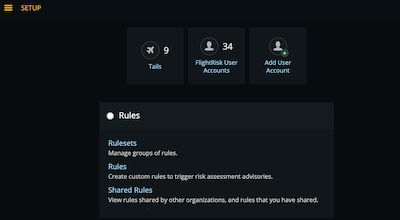Flight departments of all types strive to improve their operations and reduce risk. What makes the best flight departments even more special is their willingness to benchmark and share their best practices with others toward their own improvement and that of their brethren. One highly motivated group of flight departments utilizes Polaris Aero’s VOCUS FlightRisk to foster sharing of critical preflight risk advisories and controls across their tight-knit community and are realizing the benefits.
The Northeast Safety Roundtable (NESRT) is an association of flight departments spanning from Washington, D.C. up to Boston, MA. Its members provide transportation for many Fortune 100 companies and other safety-conscious organizations and pride themselves on their proactive approach to safety and benchmarking.
Bryan Lipson, current President of NESRT and captain for one of the member flight departments, brings together the group on a biannual basis to talk about safety challenges, process improvements, technologies being utilized, and ways of working together to help everyone better their operations. The group also discusses the same safety topics through their web forum throughout the year.

A large percentage of the NESRT member flight departments use VOCUS SMS and FlightRisk to facilitate their safety programs and pre-flight risk assessments. Risk assessment advisories and suggestive mitigations are built using Polaris’s proprietary rules engine. While these flight departments were active in creating and discussing their own rules, it became evident that there wasn’t an easy way for these organizations to share these rules directly within the software. The group brought this to Polaris Aero’s attention, and in 2023, FlightRisk got upgraded to include a rule-sharing capability, a feature that the group quickly capitalized on to foster their sharing objectives.
FlightRisk rule sharing allows each flight department to opt into sharing rules that they have created for their own use but have been deemed potentially useful to any other organization. Examples from the NESRT include advisories about what to do at FAA Identified Emphasis Airports, weight restrictions at some airports, Class B Airspaces at various locations, non-conforming FBO services, and several other hazard-related advisories.
All FlightRisk users can share their risk advisory rules. When a rule is shared by a participating NESRT flight department, it is tagged with “NESRT” as an identification tactic. This way, their members can search on the NESRT tag and easily sort for a risk advisory rule that one of their association members is utilizing, a built-in comfort level from the friend network!
According to various members of the NESRT, rule-sharing is enabling all the flight departments using FlightRisk to not only share best practices when they meet, but more quickly pass along helpful tools for use in daily flight operations.
According to Lipson, “Our ability to share safety best practices among our Roundtable members has had a positive impact on safety programs and risk assessments for our participating flight departments. While some will benefit more than others due to their program maturity levels, having a platform like FlightRisk that makes sharing simpler is a great resource for everyone.”
Lipson went on to say, “I would encourage all those who have access to FlightRisk, whether through their own subscription or via their ARINCDirect subscription, to reference the information prior to flights as a valuable additional tool for identifying flight and airport specific risks.”
